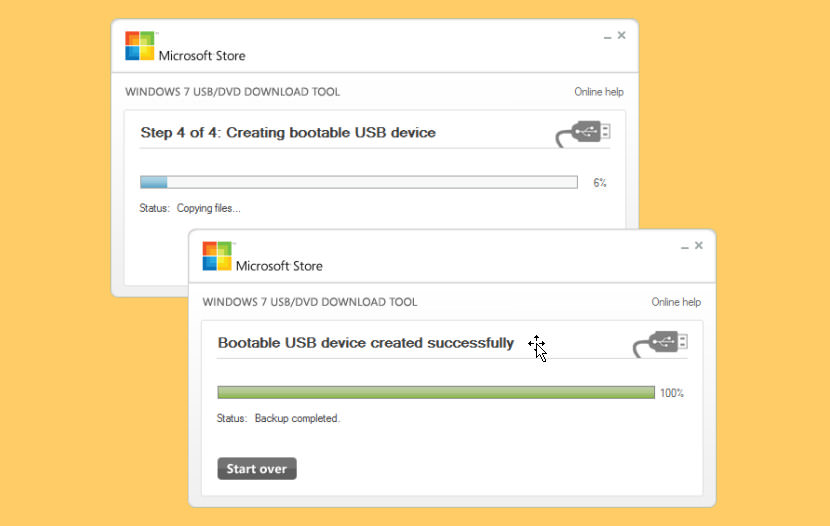

- Windows 10 usb tool install how to#
- Windows 10 usb tool install .exe#
- Windows 10 usb tool install install#
- Windows 10 usb tool install for windows 10#
If you don’t currently have one you should go there to grab one. Remember: you can download Windows 10 disc images from the Microsoft website. are supported, and the tool works with both ‘legacy’ and ‘UEFI’ bootmodes, too.įor advanced use cases I recommend using the WoeUSB CLI as it has all sorts of flags and switches to curate custom installs with specialist needs.īut for everyone else the WoeUSB GUI client is all that’s needed.īefore we begin make sure you have all of the following to handy, as all are required to create a bootable Windows 10 USB on Ubuntu:


Make sure the hardware is available wherever you're going.Well, WoeUSB lets you make a bootable USB for various Windows releases, including Windows Vista, Windows 7, Window 8, and Windows 10.Īll languages and all variants of Windows, including Pro, Home, N, 32-bit, and more. No matter which method you choose, plan accordingly. Conclusionīoth of the solutions can help you create a portable USB drive. Then, activate Windows 10 with your license code. The first time you run Windows 10 off the USB drive, you'll need to go through the normal Windows setup process. Press the appropriate key (F2, F12, Delete, or Esc) to launch your Boot menu and choose boot from the USB drive. Then, follow these steps to run Windows 10 from a USB drive.
Windows 10 usb tool install install#
The tool automatically prepares the USB drive to install Windows 10. The great thing about the Windows USB/DVD download tool is that it can create both bootable USB and DVD drives. When you want to launch Windows 10 on a different computer, insert your USB drive into that PC. Windows USB/DVD Tool is a free tool from Microsoft to create a Windows bootable drive. Leave the other options unchanged and click "Start" to begin burning the Windows 10 ISO file to the USB drive. To ensure you can boot from the USB on both UEFI and BIOS computer, choose "MBR" under the Partition scheme, From the Boot selection drop-down menu, choose "Disk or ISO image (Please select)", then click "SELECT" and choose the ISO file stored on your computer. Choose the USB device you want to burn the ISO file to.
/A1-CreateaWindows10BootableUSB-annotated-9ace32afc4a74620aa8f01f0222a04e1.jpg)
Windows 10 usb tool install .exe#
exe file to launch Rufus and connect your USB to your computer. Go to Rufus and download the latest version. Choose the language, edition, and architecture (64-bit or 32-bit) for Windows 10. On the "What do you want to do?" interface, select "Create installation media for another PC", and then select "Next". You need to download and run the media creation tool.Īs creating Windows 10 installation media will delete the content on USB or blank DVD, you'd better use a blank USB or blank DVD. A valid license for your portable copy of Windows.A USB 3.0 flash drive with at least 32 GB of storage space.To make it, you need to create Windows 10 installation media and then burn the ISO to DVD. If you don't want to use the software, you can download Windows 10 ISO file to make a portable Windows USB.
Windows 10 usb tool install how to#
How to Make a Windows 10 To Go USB Drive (with ISO File) You may download this software and learn how to make your Windows system bootable from a tiny USB drive now. system to a USB drive with simple clicks. It allows you to effectively clone and install Windows 10, 8, or 7, etc.
Windows 10 usb tool install for windows 10#
So how to effectively create such a portable Windows USB drive? For example, how to create a portable Windows USB drive for Windows 10 users? How to install and clone a Windows system to a USB drive without complex methods?įortunately, powerful EaseUS OS2Go can do the job. How to Make Portable Windows 10 on USB Drive (with Software) This will save your time and energy to take a laptop wherever you go on business. Windows portable USB drive allows you to take your own Windows system anywhere you need, and you can even directly boot your Windows from a USB drive on other computers. A portable Windows USB drive can help you reboot the PC from the USB drive, and then you can continue your work and find a solution to repair the corrupted Windows system. When your computer or laptop suddenly crashes due to system failure or internal error, you can no longer boot from the PC.


 0 kommentar(er)
0 kommentar(er)
